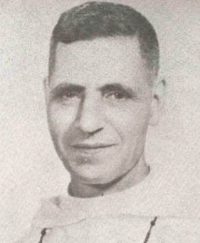Yesterday, the sky was filled with dark clouds. Today the horizon is even darker and gloomier. We had a reveille, and although the enemy came behind the thick clouds, the siren operators were not as sleepy as they were yesterday. At 7:15, the whining signal shook everybody out of bed. In fifteen minutes, the infernal blasts of engines, anti-aircraft guns, bombs, machineguns and guns filled the air. The vanguards burned the gasoline depot in Pandacan and riddled the Neilson Airfield in Makati. The main corps of the American attackers worked on the ports, the piers and the warehouses of the Port Area. A wave of planes attacked the premises of the Japanese Embassy (formerly of the American High Commissioner) where a very powerful anti-aircraft battery was installed, thus burning part of the building. One of the planes dropped its bombs behind the Binondo Church, razing a whole block of Chinese houses. A strong wind caused the fire to spread rapidly to the La Insular cigarette factory. The Oriente Building, the general headquarters of the Constabulary where some anti-aircraft guns are furiously firing, was also burned, and so were the Church and convent of Binondo. These three historical treasures were offered in a fiery holocaust to the implacable fury of Belona, the sultaness of Pasig. The three buildings were constructed during the Spanish era. The Oriente Building was a hotel, the biggest and most sophisticated during the past century. The La Insular building was constructed in 1888 by Don Joaquín Santamaría, founder of the tobacco factory of the same name. The Arabesque facade, unique of its kind in Manila, were imported from Spain. The Binondo Church on the other hand, was reconstructed after the earthquake of 1863, through the Chinese whose help was solicited by the Dominican fathers. It has actually been the parish of the Filipino residents of the district and of the Chinese Community in Manila.

Juan Labrador
Spanish member of the Order of Preachers; Rector of Colegio de San Juan de Letran.
All Posts